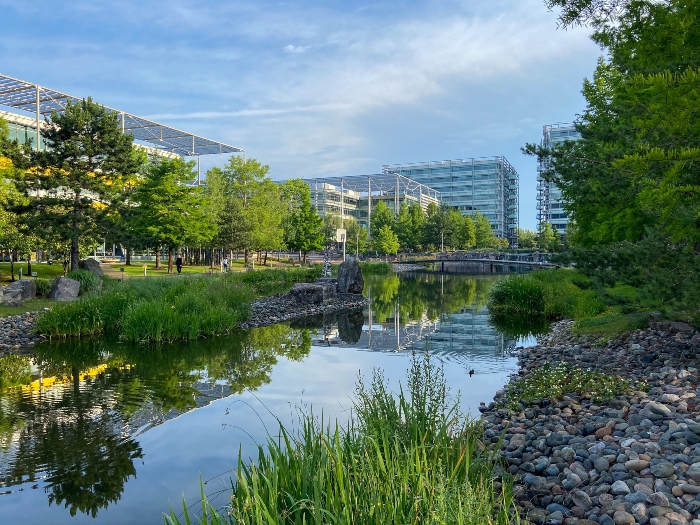Locations of least resistance
Covid-19 has forced organisations across the spectrum to re-evaluate both near and long-term business strategy. Central to the debate has been, and continues to be, the role of the workplace. Leveraging digital services during the pandemic protected the workforce and maintained business continuity.
3 minutes to read
As greater freedoms are realised though, firms are understanding the shortcomings of a wholesale digital model, operating remotely from the workplace. The loss of the personable aspects of office working for example, has led to the deterioration of social capital. That loss sustained over the long term could have lasting implications on business culture and productivity.
The sharp rise in employees working, learning and socialising online during the pandemic offers first hand evidence of how vital digital connectivity is to business survival. People are now connected to real time information every minute of every day and equally require immediate service. The objective moving forward will undoubtedly be to achieve a frictionless interrelationship between people and technology to improve service delivery and ultimately bolster operational resilience to shock.

Photo credit: Chiswick Park
So what will future business strategy entail?
It is clear that reversion to a pre Covid structure in a post pandemic business arena is unlikely. While every business is different, organisations will seek to reinvent and redefine working practices by utilising the positive aspects of hybrid models. The way firms consider spaces, meetings, travel, events and importantly, the work/ life balance of employees will be foremost. Flexibility and inclusivity will be primary. This shifting dynamic brings greater consideration of the connectivity attributes of specific locations, both physical and digital.
Our unique research explores the connectivity attributes, both digitally and physically, across the key markets in the greater London and SE region. In its creation, we examined 17 metrics across 48 locations, generating over 800 data points which were equally weighted to assess the digital and physical strengths of each location. These include:
Digital
Fibre availability, capacity and performance. Mobile network capabilities and proximity to data centre services. Whilst the importance of each component will be weighted differently according to organisation, each play a key role creating a resilient digital platform and therefore shaping future business strategy.
Physical
Access to labour. The accessibility of a location remains vital to fully leveraging the availability of skilled staff and also tapping into the next wave of new talent. We have explored the demography of each location using defined travel times.
"We examined 17 metrics across 48 locations, generating over 800 data points which were equally weighted to assess the digital and physical strengths of each location."
The findings?
Boroughs within Greater London head our combined index, with Chiswick ranking highest. It is little surprise therefore to find that Chiswick Park was the first business park in Europe to be fully accredited with a WiredScore of Gold or Platinum for all 12 buildings. Slough, renowned for its high concentration of data centres, also scores highly from a digital perspective as does Uxbridge and Heathrow. In fact, 10 of the top 15 ranked locations are included within the Thames Valley. Locations with strong innovation qualities such as Oxford, Cambridge and Brighton register midtable. This means, improvement in some of the metrics included in the connectivity index would undoubtedly enhance the already attractive offer in those cities.

Click to enlarge image
The final word
Without doubt, the world of work is changing. Next wave technologies are emerging each day and are quickly initiating organisational and process reengineering. This will not only change the future form, function and location of the workplace it will alter how we interact, move around and do business. Combining both physical and digital components provides a rounded assessment of the connectivity attributes of locations within the South East. Understanding and harnessing these two important components of the changing business landscape, will increasingly be seen as a significant area of differentiation in optimum location choice.
Andrew Wood
Partner, Tenant Representation
andrew.wood@knightfrank.com
Darren Mansfield
Partner, Commercial Research
darren.mansfield@knightfrank.com